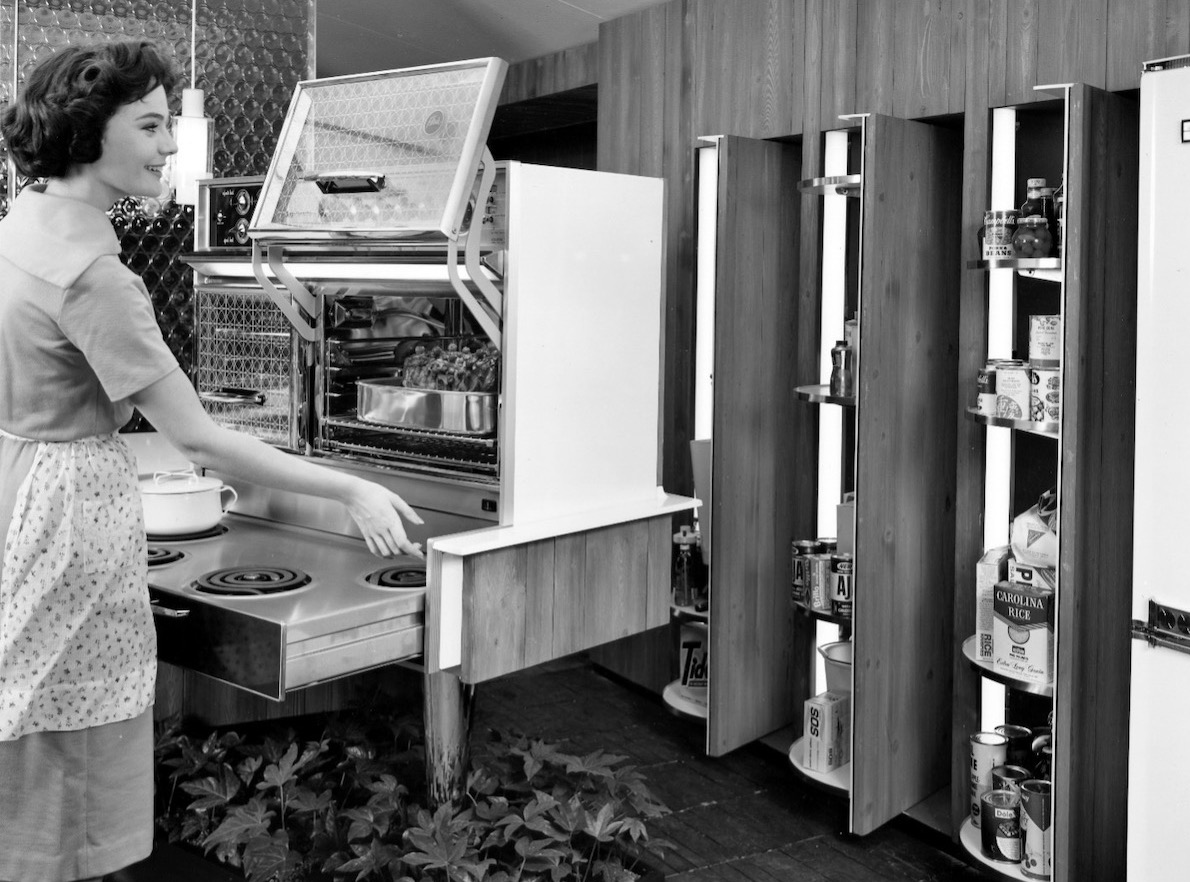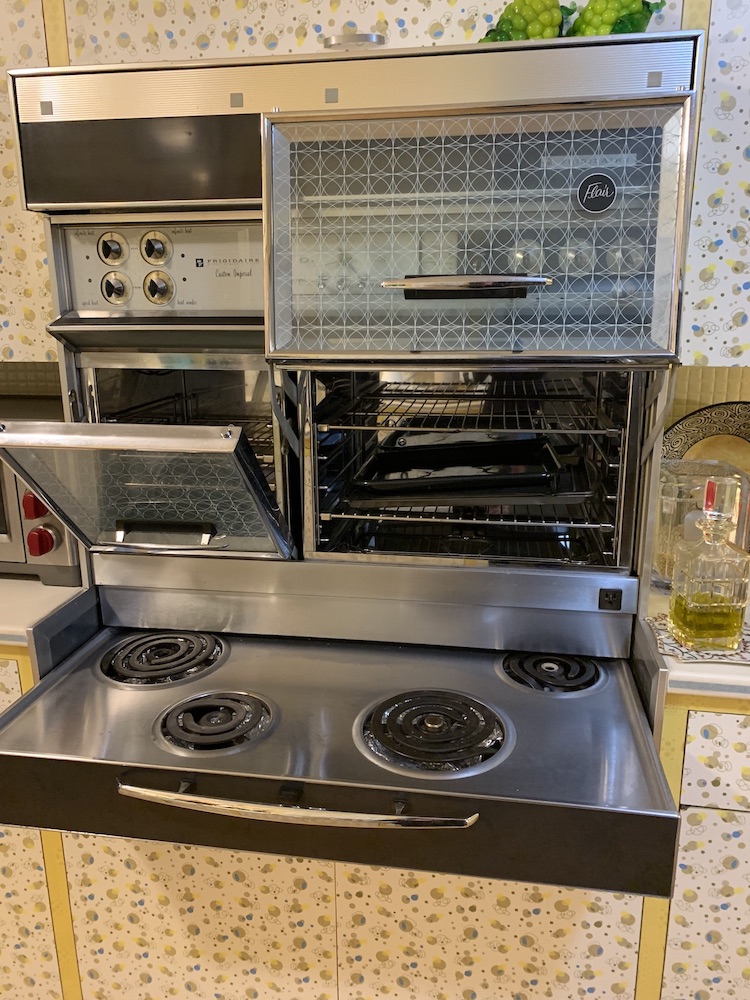Flair Oven

In 1960, the MET held its famous museum show of industrial design called “Ideas for Living.” A designer’s showcase of streamlined ways to simplify life, repercussions are still being felt today in post-post modernism.
TT owns a stove and range combination that was built into a Santa Barbara condominium in 1962 and has stayed in the unit. Only ONE burner out of four works, and neither of the range’s two ovens is operable. TT tells me she doesn’t care – Flair is a work of sculpture; a work of art. Art has its way of dominating the stomach.

The appliance was developed by one of the scholars trained at the Cranbrook School in Bloomfield Hills, Michigan – one of the leading centers – then and now – of new ideas in science and art. I have a mural designed by one of their former presidents. Cranbrook has a wonderful Center for Collections and Research of Material Culture, and for this article on TT’s appliance I found MUCH information on the midcentury modern ‘Stove-Range’ at that center.
This is a Frigidaire Flair (1962), produced when Frigidaire was owned by General Motors; hence the Michigan connection with Cranbrook. Even today there is such a range installed at the visiting scholar’s house (called the ‘Edison House’) at Cranbrook Academy. Flair is a triumph of space-saving modernity. The appliance is an electric range with four burners that are a part of a countertop ‘situation’ that rolls in and out of the wall like a drawer. Above it, flush with your kitchen cabinets (as designed), are two ovens at counter height, with unique dual flip doors – one for baking and one for broiling. These ovens have two settings: they can swing out or open with a press of a button.
For 10 years, TT has cooked on one burner and a used 2022 toaster oven. She does not want to gut her Flair and install something that works, but has none of the artistry of her appliance. She is intrigued with this appliance that is essentially a range in a drawer, invented in 1960. The forward-thinking architect of her condominium unit in 1962 had a connection to the latest in modern design – and had the nerve to bring the Flair to Santa Barbara. TT tells me that every unit in her complex had such an appliance at one time.
The Flair was designed by a female inventor, M. Jayne Van Alstyne, who was a ceramics major at Cranbrook in 1941-42. She went on to study Industrial Design at Pratt Institute, and continued to refine her skills at Alfred University in New York City in 1948-1950.
She was snapped up by General Motors, working there from 1955 to 1969 and becoming one of the auto maker’s storied “Damsels of Design” under GM’s Harley Earl.
Gender politics existed then as now, and even if she COULD have designed a great car, she was made studio head for kitchen appliances for GM’s Frigidaire, leading the research, development, and design of objects “women” used. But Van Alstyne was an engineer and efficiency expert: the blockbuster museum show, “Ideas for Living” was her brainchild, and opened – showing her Flair – in 1960.
Actor (in the 1960s she was an actress) Elizabeth Montgomery – a mere mortal playing Samantha, the suburban witch – was often seen cooking on her Flair on the set of Bewitched in that show’s run from 1964-1972. She made casseroles for TV husband Darrin Stephens (Dick York, and later the actor Dick Sargent) as an ordinary housewife. Advertisements for the Flair were also gender driven; the kitchen was female. Only recently are men pictured in a home kitchen, though chefs are thought of as male.
And here is the kicker. Cranbrook’s Center for Collections and Research of Material Culture has a blog they call “The Kitchen Sink” for just this kind of design wonder. They admit that their Flair, which is on campus JUST for show, is also not functional. “Anyone who sees the Flair in Edison House will agree it is a marvel of design. While they won’t be whipping up lunch on the appliance, I hope the kids taking classes in the house will take a moment to appreciate it. As Frigidaire promised in 1962, the Flair is “The happiest thing that ever happened to cooking… OR YOU!”
I have found the Flair advertised online for sale – and I did find one on eBay – all dusty and likely not working, in Hollywood from a TV set, for $700-800. But can we think of this as a kitchen sculpture? Yes!! Who needs to cook?






